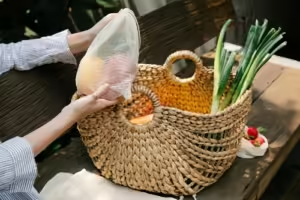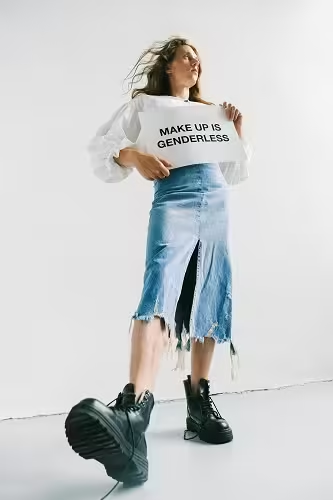Eco Friendly Fashion: The Future of Sustainable Style
Eco Friendly fashion in its various interpretations, such as the global or ethical fashion, has been prominently influential in the fashion industry. With increasing consciousness about environment, resources and inequality any form of garment and textile production and consumption, demand and supply of sustainable and ethically produced and marketed fashion is unfolding. Sustainable fashion is meant to solve the problems that have arisen in connection with the use and production of modern clothing to make it less environmentally friendly and harmless to workers.
The Environmental Impact of Traditional Fashion
The conventional fashion industry is one of the biggest polluters in the world. Global figures estimate that the industry is to blame for about 10% of the total greenhouse gases; it also contributes to water pollution and waste. Textiles production, more particularly fabrics derived from synthetic fibres such as polyester, are among the sources of micro-plastic pollution in oceans while the cultivation of cotton is water and pesticide intensive. Also, the inexpensive fashion consumption, more commonly known as fast fashion has resulted in overproduction and a high rate of textile waste. As a result of this environmental problem, there has been a rising trend in the conscious fashion movement.
Key Principles of Eco Friendly Fashion
- Sustainable Materials: This encompasses the use of such raw materials as natural products, organic and recycled products that are Eco-friendly. It includes natural fibres such as; cotton, hemp, bamboo, Tencel which is derived from wood pulp and polyester that is recycled. Up cycling also that certain brands transform waste or end-of-roll textiles into other products also prevailed.
- Ethical Production: In addition to environmental factors, ethical fashion entails the rights of worker[s]. This means making certain that working environment is safe, receiving reasonable wages, and recognising the rights of the workers. Many companies supporting this particular principle have been known to liaise with certified fair-trade bodies.
- Circular Fashion: The circular fashion model is basically directed towards making the utilisation of the clothes longer. This entails; Long lasting product design, encouraging mending and reuse, and recycling of the product when it has reached its useful life. That is why activity aimed at the utilisation of clothing as a reusable product, including clothing rental services, second-hand, and take-back programs for recycling, is part of this effort.
- Transparency: Consumers have become smarter or rather more informed, especially on the issues of origin, production, and the effect of fashion brands on the environment. To be responsible, many brands equipped with the principle of sustainable procurement give full explanations of the procurement and production process.
- Minimal Waste: Techniques such as sustainable fashion designs reduces on fabric wastage during the manufacturing process. Drawn-on patterns such as the pattern cutting methods that minimise the usage of fabrics or products made as leftovers of other products also come in handy to some brands.

Emerging Trends in Eco Friendly Fashion
- Biodegradable Fabrics: Another prevailing topic of S/s is that designers have recently started incorporating biodegradable materials as more sustainable options. These kinds of fabrics degrade in the natural cycle without further ado, and without polluting the ecosystems. Some of the examples are fabrics produced from natural and virgin fibres such as linens, wool, and silks; and the advanced materials like mushroom leather, apparels made from algae and the rest.
- Slow Fashion: This is a counter movement to the fast fashion. The ethos of slow fashion is long-lasting, advising people to go for well-made materials that are made to last and can be worn over and over again with minimal replacement.
- Digital and Tech-Driven Sustainability: More fashion brands are integrating technology back in their operations to help in cutting wastage and improving fabrics usage. For example, using of 3D printing in garment production can help to design clothes with the less usage of fabrics or in utilising fabrics that would otherwise remain unused, digital sampling and fashion can minimise the use of conventional samples and fittings.
- Vegan Fashion: With pressure from the people for clothes that do not involve cruelty to animals there is vegan clothing which does not involve animal products. Pineapple leaves (Piñatex) or apple peels can be used in making vegan leather, which is fast replacing the conventional leather.
Challenges
Eco friendly fashion is a direction that can help in overcoming the deficit in sustainable development but there are some issues. Many sustainable materials are costlier than non-sustainable ones, and ethical manufacturing tends to be more expensive to achieve, so brands that utilise it have to set higher prices, which people cannot always afford. Other challenges are those that are inherent in what is famously known as green-washing, where brands paint an image of sustainability without operational changes to that image.
Opportunities
But the prospects are enormous. In addition, for a long time there is an increase of the awareness of the consumers to the effect of their consumption, which has resulted into increased call to sustainable fashion products. Essentially there are good opportunities for companies that seek legal sustainable brands to build solid relations with the ethical consumers. Further, there is credible encouragement from the various governments and the industries mainly on the issue of sustainability which is likely to tighten up the competition between the brands that embrace sustainable practices.
The Role of Consumers
Being a part of this process, consumers are particularly essential for the development of the Eco-fashion trend. In this way, they can buy from brands which are, in turn, ready to act sustainably and responsibly. Purchasing fewer items, selecting higher quality clothes, patronising second hand stores, as well as recycling or donating clothes are examples of effective strategies to lower fashion’s Eco, foot print.
Conclusion
Sustainable fashion is an emergent concept that is crucial for the slow change in the fabrication of fashion. As the keeping the environment in check issue climbs the ladder of importance, the fashion frontier will be forced to seek better materials, recycling and proper supply chain revelation. This movement is not only changing the way clothes are produced, but also changing the way that the consumer looks upon and interacts with fashion. Eventually, the fashion of the future may well be – caring for the environment and at the same time delivering style and ideas.



